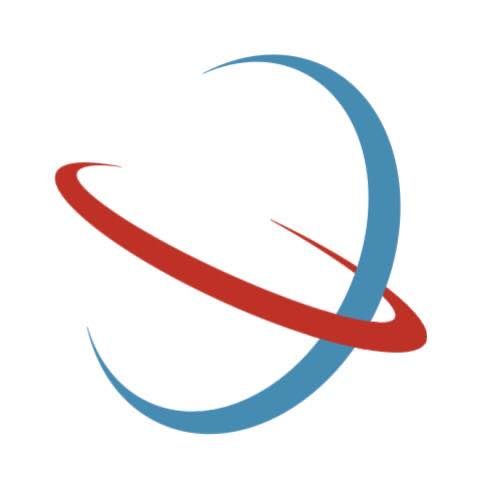预约演示
更新于:2025-10-02

Bayer AG
更新于:2025-10-02
概览
标签
肿瘤
心血管疾病
其他疾病
小分子化药
单克隆抗体
Fc融合蛋白
关联
266
项与 Bayer AG 相关的药物作用机制 NK1R 拮抗剂 [+1] |
非在研适应症 |
最高研发阶段批准上市 |
首次获批国家/地区 加拿大 |
首次获批日期2025-07-01 |
靶点 |
作用机制 TTR调节剂 |
在研适应症 |
非在研适应症 |
最高研发阶段批准上市 |
首次获批国家/地区 美国 |
首次获批日期2024-11-22 |
2,573
项与 Bayer AG 相关的临床试验NCT07192952
A Phase 3, Single-arm, Open-label Extension Study to Evaluate the Safety of Finerenone in Addition to Standard of Care, in Pediatric Heart Failure Patients, From Birth to 18 Years of Age, With Left Ventricular Systolic Dysfunction (LVSD)
Researchers are looking for a better way to treat children and young adults who have heart failure with left ventricular systolic dysfunction (LVSD). Heart failure with left ventricular systolic dysfunction (LVSD) is a condition where the left side of the heart is weak and struggles to pump blood effectively, leading to symptoms like shortness of breath, fatigue, and poor growth.
The study treatment, finerenone (also called BAY94-8862), is under development to treat newborns, children, and young adults with heart failure and LVSD. It works by blocking a protein that contributes to inflammation, scarring, and thickening in the heart and blood vessels, which may help the heart pump more blood effectively.
The main purpose of this study is to learn about how safe finerenone is and how well it works in the long-term treatment of heart failure and LVSD.
To understand how safe the treatment is, the study team will gather information on the number of patients who experience medical problems after taking finerenone, also known as "treatment emergent adverse events" (TEAEs). Additionally, they will collect blood samples to measure levels of an electrolyte called potassium and monitor blood pressure. They will also assess kidneys function using the estimated glomerular filtration rate (eGFR).
In this study, which is an extension of the earlier done FIORE study, finerenone will also be studied in newly enrolled newborns under 6 months with heart failure and LVSD and children and young adults from the FIORE study. The participants will be aged from newborns up to 18 years. All the participants will continue to receive their standard treatment as routine care for heart failure, along with finerenone during the study.
The participants will be in the study for around 10 to 11 months, depending on whether they rolled-over from the FIORE study or are newly enrolled newborns and infants <6 months of age. They will take study treatment for up to 9 months. During this period, at least 6 visits are planned for participants. During these visits, the study team will:
* have their blood pressure, heart rate, temperature, respiratory rate, height and weight measured
* have blood samples taken
* have physical examinations
* have their heart examined by an electrocardiogram and echocardiography
* answer questions about their medication and whether they have any adverse events, or have their parents or guardians' answer
* for newborns and infants, evaluate the acceptability of the study drug formulation through parents or guardians' feedback.
An adverse event is any medical problem that a participant has during a study. Doctors keep track of all adverse events that happen in studies, even if they do not think the adverse events might be related to the study treatments.
The doctors will check the participants' health a month after the participants take their last treatment.
The study treatment, finerenone (also called BAY94-8862), is under development to treat newborns, children, and young adults with heart failure and LVSD. It works by blocking a protein that contributes to inflammation, scarring, and thickening in the heart and blood vessels, which may help the heart pump more blood effectively.
The main purpose of this study is to learn about how safe finerenone is and how well it works in the long-term treatment of heart failure and LVSD.
To understand how safe the treatment is, the study team will gather information on the number of patients who experience medical problems after taking finerenone, also known as "treatment emergent adverse events" (TEAEs). Additionally, they will collect blood samples to measure levels of an electrolyte called potassium and monitor blood pressure. They will also assess kidneys function using the estimated glomerular filtration rate (eGFR).
In this study, which is an extension of the earlier done FIORE study, finerenone will also be studied in newly enrolled newborns under 6 months with heart failure and LVSD and children and young adults from the FIORE study. The participants will be aged from newborns up to 18 years. All the participants will continue to receive their standard treatment as routine care for heart failure, along with finerenone during the study.
The participants will be in the study for around 10 to 11 months, depending on whether they rolled-over from the FIORE study or are newly enrolled newborns and infants <6 months of age. They will take study treatment for up to 9 months. During this period, at least 6 visits are planned for participants. During these visits, the study team will:
* have their blood pressure, heart rate, temperature, respiratory rate, height and weight measured
* have blood samples taken
* have physical examinations
* have their heart examined by an electrocardiogram and echocardiography
* answer questions about their medication and whether they have any adverse events, or have their parents or guardians' answer
* for newborns and infants, evaluate the acceptability of the study drug formulation through parents or guardians' feedback.
An adverse event is any medical problem that a participant has during a study. Doctors keep track of all adverse events that happen in studies, even if they do not think the adverse events might be related to the study treatments.
The doctors will check the participants' health a month after the participants take their last treatment.
开始日期2026-01-05 |
申办/合作机构 |
NCT06800248
A Phase III Single-center, Randomized, Double-Blinded, Parallel-group, Active Controlled Study to Evaluate the Efficacy and Safety of a Single Dose of Emodepside Compared to Multiple Doses of Mebendazole in Adolescent and Adult Participants With Soil-transmitted Helminthiasis
This study aims to assess the efficacy and safety of emodepside compared to mebendazole in adults and adolescents infected with T. trichiura, either as single infection or co-infections with hookworm and/or A. lumbricoides.
开始日期2026-01-01 |
申办/合作机构 |
NCT07071961
Regorafenib (Reg) and Lorigerlimab (Lor), RELO Regimen, in Treatment of High-risk Patients With Colorectal Cancer With Radiographic Occult Molecular Residual Disease After End of Established Definitive Therapy [ReLOAD Trial]
To learn about the effects of the drugs regorafenib and lorigerlimab on circulating tumor DNA (ctDNA) in patients with CRC and who have radiographic occult minimal residual disease (MRD) after completing standard-of-care therapy
开始日期2026-01-01 |
100 项与 Bayer AG 相关的临床结果
登录后查看更多信息
0 项与 Bayer AG 相关的专利(医药)
登录后查看更多信息
14,177
项与 Bayer AG 相关的文献(医药)2025-12-31·JOURNAL OF MEDICAL ECONOMICS
Cost-effectiveness analysis of regorafenib dose optimization for refractory metastatic colorectal cancer
Article
作者: Appukkuttan, Sreevalsa ; Cho, Sang Kyu ; Barzi, Afsaneh ; Grossman, Jamie ; Lee, Woojung ; Babajanyan, Svetlana ; Hocum, Brian ; Marian, Marisca ; Yang, Min ; Bekaii-Saab, Tanios
BACKGROUND:
New regimens have emerged as third-line or later therapies for metastatic colorectal cancer (mCRC), including regorafenib dose optimization (ReDO), trifluridine/tipiracil and bevacizumab (TAS-BEV) combination therapy, and fruquintinib. We evaluated relative cost-effectiveness of these therapies in patients with mCRC from a US payer's perspective.
MATERIALS AND METHODS:
A partitioned survival model (PSM) was constructed to estimate total costs and quality-adjusted life years (QALYs). Clinical parameters were obtained from pivotal trials of the respective therapies and incremental cost-effectiveness ratios (ICERs) were estimated to assess relative cost-effectiveness of these treatments. Model robustness was assessed using deterministic (DSA) and probabilistic sensitivity analysis (PSA). Three scenario analyses were conducted: (1) assuming equal efficacy across treatments, (2) with prior exposure to anti-vascular endothelial growth factor (VEGF) therapy, and (3) alternative clinical inputs for fruquintinib from a different clinical trial.
RESULTS:
Under the conventional willingness-to-pay (WTP) threshold in US ($150,000 per QALY gained), ReDO was cost-effective when compared with TAS-BEV and was dominant over fruquintinib. TAS-BEV was associated with an incremental QALY of 0.197 over ReDO, resulting in an ICER at $554,567 per QALY gained. The base case results were robust in DSA and PSA. Most influential parameters were treatment cost and effectiveness. In patients with prior anti-VEGF therapy, ReDO remained cost-effective compared to TAS-BEV and fruquintinib under the conventional WTP threshold.
LIMITATION:
Differences in trial populations may affect the comparability of the outcomes. Sensitivity and scenario analyses were conducted to address these limitations.
CONCLUSION:
ReDO was cost-effective compared with TAS-BEV from the US payer's perspective despite a higher QALY gain associated with TAS-BEV. ReDO was dominant over fruquintinib, consistently having a higher QALY gain and lower cost.
2025-12-31·JOURNAL OF MEDICAL ECONOMICS
Cost-minimisation analysis of anti-VEGF therapies in neovascular age-related macular degeneration and diabetic macular oedema in Switzerland
Article
作者: Maamari, S. ; Quist, S.W. ; Boer, M. ; Ambresin, Aude ; Barthelmes, D.
OBJECTIVE:
This study compares the direct healthcare costs of anti-VEGF therapies, including treat-and-extend (T&E) and other durable regimens, for unilateral neovascular age-related macular degeneration (nAMD) and diabetic macular oedema (DMO) in Switzerland.
METHODS:
An adapted cost-minimisation model estimated healthcare costs over two years for aflibercept 2 mg, aflibercept 8 mg, faricimab, ranibizumab, and ranibizumab biosimilars using clinical trial injection frequencies. Break-even analyses identified the medication prices and injection frequencies required for higher-cost therapies to achieve cost parity with the least expensive options. A one-way sensitivity analysis (OWSA) assessed key drivers of cost outcomes.
RESULTS:
Aflibercept 8 mg was estimated to be associated with the lowest treatment costs for both indications (CHF 11,814 for nAMD; CHF 11,242 for DMO). Faricimab (CHF 13,737) and aflibercept 2 mg (CHF 15,243) followed in nAMD and DMO. Ranibizumab and its biosimilars incurred the highest costs: for nAMD, biosimilars ranged from CHF 16,243 to CHF 17,497 and the reference product reached CHF 18,424; for DMO, biosimilars ranged from CHF 18,187 to CHF 19,596, with the reference product at CHF 20,637. Break-even analyses for nAMD showed that prices would need to drop by -22% (faricimab, CHF 644) to -64% (ranibizumab reference, CHF 218) relative to aflibercept 8 mg. For DMO, reductions ranged from -42% (aflibercept 2 mg, CHF 493) to -81% (ranibizumab reference, CHF 114). The OWSA highlighted medication price and injection frequency as primary cost drivers.
CONCLUSIONS:
This study estimated that the potentially minimized injection frequency of aflibercept 8 mg in a clinical trial regimen may result in the lowest treatment costs for nAMD and DMO, followed by faricimab and aflibercept 2 mg, respectively.
2025-12-31·JOURNAL OF MEDICAL ECONOMICS
Cost-effectiveness of CMR over MPS-SPECT: a systematic review of recent trends for diagnosing CAD
Review
作者: Sánchez-Collado, Irene ; Kluge, Ben ; Christophel, Sina ; Pérez-Román, Inés ; Blankenburg, Michael ; Harris, James ; Greenwood, John P. ; Paffett, Molly ; Harz, Cornelia
AIMS:
The health economic impacts of cardiovascular magnetic resonance (CMR) imaging and myocardial perfusion scintigraphy by single photon emission computed tomography (MPS-SPECT) as diagnostic modalities are not well understood. This review is based on a wider systematic review and aims to compare CMR and MPS-SPECT as first-line, non-invasive modalities for the diagnosis of symptomatic individuals with a low-to-intermediate pre-test probability (PTP) of coronary artery disease (CAD).
MATERIALS AND METHODS:
We performed a systematic review of MEDLINE and Embase, MEDLINE In-process, the Cochrane Database of Systematic reviews and the Cochrane Central Register of Controlled Trials. Studies from January 1992 to January 2023 were included, if they were based in the UK, France, Germany, Italy, Japan, China, and/or the USA (published in any language). Risk of bias was assessed using the Drummond checklist.
RESULTS:
Thirteen relevant reports were identified. In the USA, CMR was consistently cost-effective compared with MPS-SPECT for patients with a low-to-intermediate PTP of CAD; resource use and associated costs, as well as total costs, were lower. For patients with a low-to-intermediate PTP of CAD in Europe, CMR was cost-effective in Germany, while in the UK increases in quality-adjusted life-years were found but cost savings were mixed. This review found only 13 reports on the economic benefits of CMR over MPS-SPECT, with just three providing cost-effectiveness outcomes, highlighting the need for further research across different settings and perspectives.
CONCLUSION:
Overall, findings suggest that the cost savings from using CMR compared with MPS-SPECT for patients with a low-to-intermediate PTP of CAD support prioritized investment; however, confirmatory research is needed given the limited number of cost-effectiveness analyses identified in this review.
7,589
项与 Bayer AG 相关的新闻(医药)2025-09-30
·医药代表
因为和另一公司“名字撞车”,医药企业爱尔康意外躺枪。
事情要从商务部一则公告说起。
9 月 25 日,商务部发布《不可靠实体清单工作机制关于将萨罗尼克科技公司等 3 家美国企业列入不可靠实体清单的公告》,其中提到:
将萨罗尼克科技公司(Saronic Technologies, Inc.)、爱尔康公司(Aerkomm Inc.)、国际海洋工程公司(Oceaneering International, Inc.)等3家实体列入不可靠实体清单,并采取以下处理措施:
禁止上述企业从事与中国有关的进出口活动;
禁止上述企业在中国境内新增投资。
对于医药人来说,很容易分辨出此爱尔康(Aerkomm)非彼爱尔康(Alcon),但是,对于外界来说,未必分得这么清楚。
9 月 28 日,爱尔康(Alcon)中国发布声明,对近期一些媒体提及的“爱尔康”公司名称事宜做出相应说明。
爱尔康(Alcon)中国在声明中表示,中文名称相似仅因翻译原因,商务部、外交部发文提到的“爱尔康”公司所指均是 AerkommInc.,而非爱尔康中国母公司——Alcon lnc.,两家公司是完全不同的法律实体,也没有任何关联关系。
医药人对于爱尔康(Alcon)比较熟悉,这是一家全球领先的眼科设备公司,主营业务包括眼科手术产品和视力保健产品的开发、生产和销售。
这家跨国药企的历史可以追溯到 80 年前。
1945 年,两位药剂师 Robert Alexander 与 William Conner 在美国德克萨斯州沃斯堡开设了一家小药房,并将各自姓氏的首音节结合,命名为 Alcon。
两年后,爱尔康实验室(Alcon Laboratories, Inc.)正式成立,开始生产眼科专科药品。
1978 年,瑞士的雀巢公司收购了美国爱尔康97%的股份,给爱尔康注入了很大资金,帮助爱尔康业务进一步扩张,2002 年,雀巢将爱尔康在证券交易所上市,但仍持有 77% 的股权。
随着青光眼、白内障以及屈光不正等领域的医学进步,眼科领域市场壮大,隐形眼镜领域也有了很大的市场,当时,诺华旗下的汽巴视康(CIBA Vision)在开发创新镜片方面引领行业,而爱尔康则在隐形眼镜护理产品上独具优势。
2008 年 7 月,诺华收购了雀巢拥有的爱尔康 25% 的股份,并获得在 2010 年起对于雀巢其他股份的优先购买权,之后诺华以281亿美元收购了雀巢拥有的其他的52%的股份,从 2010 年 1 月开始,诺华正式宣布将完成收购爱尔康其余部分的股权,并和爱尔康董事会达成协议。
2011 年 4 月,诺华完成收购爱尔康,并在爱尔康、汽巴视康和诺华制药眼科部基础之上成立了一个新的眼科事业部,打造全球领先的眼科保健业务。
当时,新成立的爱尔康事业部是诺华第二大事业部,仅次于制药事业部,2011年营收达到100亿美元。
2016 年 1 月,诺华将爱尔康眼科药物转移到诺华制药,增强诺华制药领先的眼科药品业务,爱尔康部门则完全专注于眼科手术和视觉护理设备,保持全球领先的眼科护理设备公司地位(见 MRLCUB 历史消息:爱尔康药品部将与诺华特药眼科部合并)。
诺华收购爱尔康总计超过 500 亿美元,这次收购后来被证明是一个失败的交易,近几年来,诺华一直对爱尔康业务进行评估,媒体多次有报道,诺华可能会出售这个业务单元(见 MRCLUB 历史消息:业绩下滑,诺华卖掉爱尔康或只是时间问题),而此次分析师认为,分拆后的爱尔康的市值可能在 150 亿美元到 230 亿美元之间。
这个价值低于诺华当初的收购价也是合理的,毕竟爱尔康眼科药品业务仍留在诺华,这项业务 2017年 创造了 46 亿美元的收入,而爱尔康眼科手术和视觉护理设备 2017 年的营收也有 70 多亿美元。
2018 年 6 月 29 日,诺华宣布,有意将自己的眼科护理业务部门——爱尔康剥离为一个独立的公司,并回购最多 50 亿美元股票,同时表示,剥离计划有助于诺华和爱尔康完全关注各自的增长战略(见 MRCLUB 历史消息:各奔前程!诺华宣布剥离爱尔康)。
此后又经历了多次推进,相关报道不一一贴出了,感兴趣的可以直接搜索 MRCLUB 历史消息。
2019 年 4 月 9 日,爱尔康宣布,已完成与诺华的分拆并作为一家独立上市公司正式亮相,爱尔康股票于当日起在瑞士证券交易所(SIX)和纽约证券交易所(NYSE)同步上市交易(见 MRCLUB 历史消息:全新爱尔康闪亮登场!眼科巨头正式独立上市)。
目前爱尔康(Alcon)的全球 CEO 是David J. Endicott,国际部总裁是 Rajkumar Narayanan,爱尔康(Alcon)中国区总裁是柯瑞德(Rick Kozloski),他原来是爱尔康日本总裁,于 2022 年 11 月起就任爱尔康中国区总裁。
这一两年来爱尔康在中国的运营也发生了很多变化,去年 8 月 12 日,爱尔康(Alcon)和欧康维视生物达成协议,欧康维视将从爱尔康获得 8 款干眼症治疗和手术用滴眼液产品组合的在华相关权益,包括新泪然®、倍然®、爱尔凯因®、历设得®和赛飞杰®、思然®和 AR-15512(见 MRCLUB 历史消息:爱尔康向中国药企转让8个产品)。
相关阅读:
一跨国药企宣布,退出27个市场
22名医药人被罚!全在这家药企…
《国谈药品管理专家共识》征求意见
刚刚,A司按下“升级键”,信息量很大
确认了!BMS出售合资药企,不是退出
超14亿!又一跨国药企出售中国市场业务
知名药企官宣,补税超三千万
告别GSK,齐欣执掌奥利佳
百济神州全国多部门热招中
第十一批国采《采购文件》下载
钟睒睒巨资入局,山西女首富就任总经理
超两百亿!罗氏买买买,员工也转入
重磅合作!医学界×腾讯
今天,多家药企高管大变动!
刚刚,又一省医保局原副局长被查
9月更新版!10个重点监控药品名单
超500亿!辉瑞强势入局减肥赛道
严查异常处方!国家医保局启动百日行动
官宣了!默克更换全球首席执行官
百时美施贵宝中国为何“换挡”?
千亿医药巨头,百万年薪副总裁辞职
绿竹生物任命副总经理,薪酬超五百万
套取销售费用,一药企被要求整改
费森尤斯卡比中国秋季热招中
从医药代表到CEO!GSK换帅
某重点监测清单,50种药品
加入拜耳正当时!中秋热招
MRCLUB原创作者招募中
数十万精准会员每日阅读,助您快速提升个人品牌,扩大在医药行业及社会化媒体的影响力!(详情请访问网站http://wemr.club)
医药代表 伴您成长!
并购siRNA核酸药物
2025-09-30
·医药代表
外企医药人的节日大礼包来了!
今天,十一、中秋八天小长假前夕,国家药监局发布了一份《关于境外已上市药品获批前商业规模批次产品进口有关事宜的公告》。
名字很绕,但核心信息其实很简单:
以后,已经在国外上市的新药,在中国一旦获批,就可以直接把之前在国外生产的商业批次产品,拿来进口销售了,不必等到获批后再专门生产一批新的。
无论对于国内患者,还是跨国药企,好处是很直接的,境外新药在中国获批当天起,就能同步进口此前的商业批次产品,减少患者等待时间。
对于跨国药企在境外已上市的新分子药和改良型新药来说,就可以缩短获批后的商业化窗口期,更快覆盖中国市场。
同时,也可以减少企业因等待中国生产批次放行而导致的市场断档。
详情大伙儿直接看文件吧:
国家药监局关于境外已上市药品获批前商业规模批次产品进口有关事宜的公告(2025年第96号)
发布时间:2025-09-30
为落实《国务院办公厅关于全面深化药品医疗器械监管改革促进医药产业高质量发展的意见》(国办发〔2024〕53号)有关要求,支持创新药品和急需药品尽早用于临床、惠及患者,现就境外已上市药品获批前商业规模批次产品进口等有关事宜公告如下。
一、适用药品类别
境外已上市药品在我国获批上市(含取得药品批准证明文件、取得补充申请批准证明文件,下同)后,对符合要求的获批前商业规模批次产品,允许进口并上市销售。相关产品应当属于下列情形之一:
(一)原研药品或者改良型药品。
(二)《国家短缺药品清单》《国家临床必需易短缺药品重点监测清单》《鼓励仿制药品目录》《鼓励研发申报儿童药品清单》列明的药品。
(三)适应症包括《罕见病目录》列明疾病的药品。
(四)在我国获批上市前,按照《临床急需药品临时进口工作方案》获准临时进口的药品。
(五)依据《药品注册管理办法》,适用药品加快上市注册程序在我国获批上市的药品。
(六)国务院药品监督管理部门规定的其他药品。
二、条件要求
申请办理境外已上市药品获批前商业规模批次产品进口备案,除符合《药品进口管理办法》要求外,还需同时满足以下条件:
(一)境外药品监督管理机构已允许该药品上市销售;发生上市后变更的,境外药品监督管理机构已批准该药品上市后变更,或者根据境外法律法规完成备案等。
(二)产品质量标准符合我国药品监督管理部门核准的药品注册标准要求,生产场地、生产工艺与我国药品批准证明文件内容或者按要求备案的内容一致,说明书、标签与我国药品监督管理部门核准内容或者按要求备案的内容一致。
(三)通过我国、生产地所在国(地区)或者注册上市(含申报注册上市)国(地区)药品生产质量管理规范(GMP)符合性检查及之后生产。
(四)在我国获批上市后签署放行文件。
三、其他事项
(一)药品上市许可持有人及其指定的境内责任人应当按照附件要求提交申请函(模板见附件1)和相关材料(提交要求见附件2)。受理进口备案申请的口岸药品监督管理部门开展相关查验工作(查验事项见附件3)。
(二)已在境外和我国获批上市、且已在我国销售使用的进口药品发生上市后变更的,该变更事项在我国获批后,其获批前商业规模批次产品的进口可参照本公告执行。其中,依据《药品上市后变更管理办法(试行)》和有关指导原则,属于备案类变更的,在完成备案信息公示后,备案前生产的、与备案信息一致的商业规模批次产品可按照《药品进口管理办法》办理进口备案,无需按照本公告要求提交材料。
(三)境外生产的创新药和改良型新药在我国获批上市后,获批前商业规模批次产品进口可参照本公告执行,申请进口备案时免于提交境外药品监督管理机构出具的允许该药品上市销售证明文件。
(四)药品上市许可持有人及其指定的境内责任人应当加强获批前商业规模批次产品的风险管理。对于违反本公告规定销售获批前商业规模批次产品的,由药品上市许可持有人的境内责任人所在地省级药品监督管理部门依法依规查处。
特此公告。
附件:
1.获批前商业规模批次产品进口备案申请函(模板)
2.提交材料要求
3.查验事项
国家药监局
2025年9月29日
相关阅读:
一跨国药企宣布,退出27个市场
22名医药人被罚!全在这家药企…
《国谈药品管理专家共识》征求意见
刚刚,A司按下“升级键”,信息量很大
确认了!BMS出售合资药企,不是退出
超14亿!又一跨国药企出售中国市场业务
知名药企官宣,补税超三千万
告别GSK,齐欣执掌奥利佳
百济神州全国多部门热招中
第十一批国采《采购文件》下载
钟睒睒巨资入局,山西女首富就任总经理
超两百亿!罗氏买买买,员工也转入
重磅合作!医学界×腾讯
今天,多家药企高管大变动!
刚刚,又一省医保局原副局长被查
9月更新版!10个重点监控药品名单
超500亿!辉瑞强势入局减肥赛道
严查异常处方!国家医保局启动百日行动
官宣了!默克更换全球首席执行官
百时美施贵宝中国为何“换挡”?
千亿医药巨头,百万年薪副总裁辞职
绿竹生物任命副总经理,薪酬超五百万
套取销售费用,一药企被要求整改
费森尤斯卡比中国秋季热招中
从医药代表到CEO!GSK换帅
某重点监测清单,50种药品
加入拜耳正当时!中秋热招
MRCLUB原创作者招募中
数十万精准会员每日阅读,助您快速提升个人品牌,扩大在医药行业及社会化媒体的影响力!(详情请访问网站http://wemr.club)
医药代表 伴您成长!
上市批准引进/卖出
2025-09-30
$1 Million in Research Grants Focused on Lung Cancers Harboring HER2 Mutations and/or Other HER2 Alterations Awarded
NEW YORK, Sept. 30, 2025 /PRNewswire/ -- The Lung Cancer Research Foundation (LCRF) is pleased to announce, in collaboration with Bayer Pharmaceuticals, the recipients of two research grants focused on innovative strategies to advance the understanding and management of lung cancers harboring HER2 mutations and/or other HER2 alterations.
Continue Reading
Xiuning Le, MD, PhD and Sarah Goldberg, MD, MPH
These grants are awarded to projects that address important mechanistic questions and developmental therapeutics across the care continuum for HER2-mutant NSCLC, with the potential to improve patient outcomes. Titled LCRF|Bayer Research Award on Innovative Therapeutic Strategies to Treat Lung Cancers Harboring HER2 Mutations and/or Other HER2 Alterations, submissions were required to include correlative, translational research to advance the understanding of HER2-driven lung cancers. Additionally, submissions were required to include a patient or patient advocate as part of the research team with a role in project design. Awardees receive $500,000 over two years for their projects.
"There is an urgent need to understand the role of HER2 alterations as oncogenic drivers as well as tumor response and resistance mechanisms," says Kathryn O'Donnell, PhD, LCRF Scientific Advisory Board chair. "We are hopeful that these projects will drive tangible benefits for patients whose tumors harbor these mutations or alterations."
"We extend our congratulations to the recipients of these awards. We share the investigators' commitment to patients living with lung cancer, and the desire to bring impactful research results to not only improve treatments, but quality of life," said Lucia Regales, PhD, Global Medical & Evidence Strategy Lead Oncology at Bayer's Pharmaceuticals Division.
The recipients of the LCRF|Bayer Research Award on Innovative Therapeutic Strategies to Treat Lung Cancers Harboring HER2 Mutations and/or Other HER2 Alterations are:
Sarah Goldberg, MD,MPH
Yale School of Medicine
Associate Professor of Internal Medicine (Medical Oncology)
Associate Director, Hematology/Oncology Fellowship Program
Research Director, Center for Thoracic Cancers
Stratifying and Personalizing for HER2 Mutated Lung Cancers
Xiuning Le, MD, PhD
University of Texas MD Anderson Cancer Center
Associate Professor, Department of Thoracic/Head and Neck Medical Oncology
Division of Internal Medicine
Characterization of HER2 Mutations' Sensitivity to Sevabertinib & Development of Novel Combination Strategies to Overcome Resistance to Current HER2 Therapies
To learn more about LCRF funded research and its grants program, visit .
About the Lung Cancer Research Foundation (LCRF)
The Lung Cancer Research Foundation® (LCRF) is the leading nonprofit organization focused on funding innovative, high-reward research with the potential to extend survival and improve quality of life for people with lung cancer. LCRF's mission is to improve lung cancer outcomes by funding research for the prevention, diagnosis, treatment, and cure of lung cancer. To date, LCRF has funded 431 research grants, totaling nearly $49 million, the highest amount provided by a nonprofit organization dedicated to funding lung cancer research. For more information, visit lcrf.org.
Contact:
Sheila Sullivan
Sr. Director, Marketing & Communications, LCRF
[email protected]
SOURCE Lung Cancer Research Foundation
WANT YOUR COMPANY'S NEWS FEATURED ON PRNEWSWIRE.COM?
440k+
Newsrooms &
Influencers
9k+
Digital Media
Outlets
270k+
Journalists
Opted In
GET STARTED
100 项与 Bayer AG 相关的药物交易
登录后查看更多信息
100 项与 Bayer AG 相关的转化医学
登录后查看更多信息
组织架构
使用我们的机构树数据加速您的研究。
登录
或

管线布局
2025年10月30日管线快照
管线布局中药物为当前组织机构及其子机构作为药物机构进行统计,早期临床1期并入临床1期,临床1/2期并入临床2期,临床2/3期并入临床3期
药物发现
19
77
临床前
临床1期
43
23
临床2期
临床3期
8
2
申请上市
批准上市
92
458
其他
登录后查看更多信息
当前项目
| 药物(靶点) | 适应症 | 全球最高研发状态 |
|---|---|---|
利伐沙班 ( factor Xa ) | 心房颤动 更多 | 批准上市 |
达罗他胺 ( AR ) | 转移性去势抵抗性前列腺癌 更多 | 批准上市 |
阿柏西普 ( PGF x VEGF-A ) | 视网膜静脉阻塞相关黄斑水肿 更多 | 批准上市 |
利奥西呱 ( sGC ) | 肺性高血压 更多 | 批准上市 |
维立西呱 ( sGC ) | 射血分数降低的慢性心力衰竭 更多 | 批准上市 |
登录后查看更多信息
药物交易
使用我们的药物交易数据加速您的研究。
登录
或

转化医学
使用我们的转化医学数据加速您的研究。
登录
或

营收
使用 Synapse 探索超过 36 万个组织的财务状况。
登录
或

科研基金(NIH)
访问超过 200 万项资助和基金信息,以提升您的研究之旅。
登录
或

投资
深入了解从初创企业到成熟企业的最新公司投资动态。
登录
或

融资
发掘融资趋势以验证和推进您的投资机会。
登录
或

生物医药百科问答
全新生物医药AI Agent 覆盖科研全链路,让突破性发现快人一步
立即开始免费试用!
智慧芽新药情报库是智慧芽专为生命科学人士构建的基于AI的创新药情报平台,助您全方位提升您的研发与决策效率。
立即开始数据试用!
智慧芽新药库数据也通过智慧芽数据服务平台,以API或者数据包形式对外开放,助您更加充分利用智慧芽新药情报信息。
生物序列数据库
生物药研发创新
免费使用
化学结构数据库
小分子化药研发创新
免费使用



